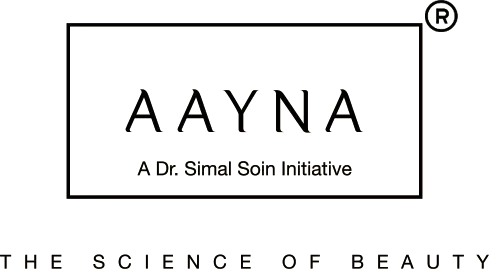Medically termed striae distensae, stretch marks are the “scar-like” lines that appear when the skin stretches and shrinks at rapid progression. When discussing stretch marks, most people are familiar with the condition and its common symptoms.
According to reports, roughly 90% of the global population already struggles with stretch marks or will experience them at least once in their life. It is a lot more common than you might think. However, only a few people are aware of the triggers that contribute to the onset of the condition in the first place.
In this comprehensive exploration, we delve into the intricate science behind stretch marks causes, triggers, and the fascinating processes occurring beneath the surface of our skin.
Breaking Down the Skin Anatomy
We first need to understand the basic anatomy of the skin to comprehend stretch marks better.
The skin is a dynamic organ composed of three layers: the epidermis, dermis, and hypodermis. The dermis, sandwiched between the outer epidermis and the deeper hypodermis, is pivotal in maintaining the skin’s structural integrity.
Regarding factors that maintain the skin’s firmness and integrity, two proteins are responsible for the same – collagen and elastin. Collagen provides tensile strength, ensuring the skin can resist stretching, while elastin imparts elasticity, allowing the skin to revert to its original position afterward.
A delicate balance between the production and availability of these two proteins is quintessential for maintaining the skin’s resilience. Stretch marks emerge when the skin undergoes rapid or excessive stretching, causing the dermal layer to tear. This tearing disrupts the normal arrangement of collagen and elastin fibers, forming scar tissue.
This is one of the reasons why the stretch mark initially appears as blue or purple and later settles into a white or silvery color over time. What this indicates is the maturation of the scar tissue.
Related Blog: Lifestyle Changes for Stretch Marks
What Causes Stretch Marks?
Identifying stretch marks on the body isn’t rocket science. The symptoms are standardized and visible, which means that most people are aware of what a stretch mark looks like but aren’t aware of what contributes to the condition in the first place.
To be fair, you aren’t the only person with a similar predicament. So, let us walk you through the triggers for stretch marks on the body:
Rapid Growth During Adolescence
When talking about the stretch marks causes, this is probably one of the most underrated factors that people don’t openly discuss. Adolescence is a time when individuals experience a rapid and unexpected growth spurt, and during that period, the skin may struggle to keep pace with the sudden changes in the body.
During this phase, stretch marks are commonly visible on the thighs, buttocks, and breasts. They are very common and should never be something that one should be ashamed of.
Pregnancy or Maternal Stretch Marks
Another significant phase that readily contributes to the appearance of stretch marks on the body is during pregnancy. As the skin accommodates the growing fetus, the abdominal skin is subjected to considerable stretching, forming stretch marks. This is one of the reasons why doctors often recommend moisturization and the application of stretch marks-specific oils to prevent the symptoms from occurring in the first place.
Witnessing stretch marks during pregnancy is common and can be more visible for women carrying multiple fetuses.
Sudden and Abrupt Weight Fluctuations
Be it sudden weight gain or loss, stretch marks can manifest in either condition. Abrupt weight fluctuations can strain the skin, causing it to stretch or shrink, depending on whether you have gained or lost weight.
So, if you are undergoing weight-related transformations, ensure that you focus on a gradual and sustainable transformation instead of chasing rapid results.
Hormonal Changes
You might think, ‘How do hormones affect the skin?’
Hormones play a significant role in what causes stretch marks. Imbalance or changes to the body’s hormonal levels can often impact the skin’s elasticity. Puberty, hormonal therapies, and certain medical conditions may induce hormonal changes that increase the likelihood of developing stretch marks.
Note: Hormonal changes don’t ALWAYS contribute to stretch marks, but they can elevate the risks of stretch marks.
Having a Genetic Predisposition
Another often brushed to the side is having a familial history of stretch marks. If people in your family have experienced stretch marks, there remains a risk that you might be predisposed to the risks as well.
Medical Conditions or Medications
Last on the list of triggers for stretch marks on the body are certain medical conditions or the use of specific medications.
Prolonged use of corticosteroid medications, either topically or orally, can compromise the skin’s collagen production and contribute to the development of stretch marks.
Similarly, medical conditions like Marfan syndrome and Ehlers-Danlos syndrome directly impact the body’s connective tissues, making the skin more vulnerable to stretch marks.
If you are experiencing them, your skin’s resilience and elasticity are likely compromised. You can introduce lifestyle changes to reduce their appearance or undergo treatments like AAYNA Clinic’s FRAXEL Laser Therapy for assured results.
How do Stretch Marks Form?
When we talk about ‘how it forms,’ we focus on explaining the dynamic process involving several stages that lead to the formation of the stretch marks. This includes three distinct stages:
Inflammatory Phase – When the skin is stretched beyond its capacity, microscopic tearing occurs in the dermis. This triggers an inflammatory response, leading to red or purple discoloration as blood vessels dilate to promote healing.
Proliferative Phase – Fibroblasts, specialized cells in the skin, rush to the wounded area to synthesize new collagen and elastin fibers. This phase is crucial for repairing the damaged dermis and restoring structural integrity.
Maturation Phase – The initially inflamed stretch marks gradually fade over time, and the scar tissue matures. During this phase, the red or purple hue transforms into a silvery or white, reflecting changes in blood flow and collagen composition.
So, for example, if you notice that the stretch marks appear red or purple, they are still in the inflammatory stage. However, if they appear white, they have likely already reached the maturation phase.
AAYNA Clinic Exclusive: FRAXEL Laser Therapy
Now that you have a detailed understanding of the reason for stretch marks, it makes sense that you are looking for remedies. How do you get rid of them? How do you eliminate those white scar-like vertical lines running along the side of your abdomen and thighs?
Firstly, making convenient changes to your lifestyle can minimize the further progression of stretch marks and even reduce their appearance significantly. Some tips to keep in mind for that are:
- Adequate hydration
- Balanced nutrition
- Optimal moisturization
- Using collagen-boosting treatments
- Topical treatments
- Regular exercise, etc.
However, if the stretch marks symptoms are beyond your control, consulting professionals can help overcome the complexities. At AAYNA Clinic, we offer comprehensive consultations and tailored treatments for it.
Among all the available treatments, the FRAXEL Laser Therapy is considered the gold standard for all the right reasons. It is a fractional laser technology that targets specific areas in the skin with microscopic laser columns.
Unlike traditional laser treatments that affect the entire skin surface, Fraxel divides the laser energy into thousands of tiny treatment zones, leaving surrounding tissue untouched. This fractional approach promotes faster healing and stimulates collagen and elastin production in those specific areas of the skin.
The Fraxel treats a fraction of the skin at a time, ensuring quicker recovery and healing and minimizing downtime. This approach promotes uniform healing and a more natural-looking result.
Not just that, it also triggers collagen and elastic production, which contribute to the skin’s structural integrity, aiding in the repair and remodeling of damaged tissue, thereby reducing the appearance of stretch marks.
Conclusion
While preventing stretch marks may be challenging, a holistic approach to skin health can minimize their severity and impact. With how far cosmetic treatments have come, treating stretch marks and the triggers for stretch marks on the body isn’t as complicated anymore.
If you are looking for effective stretch mark removal treatment with guaranteed and satisfactory results, our team at AAYNA Clinic is here to guide you through the process. We look forward to offering you innovative solutions to address and manage stretch marks effectively.



